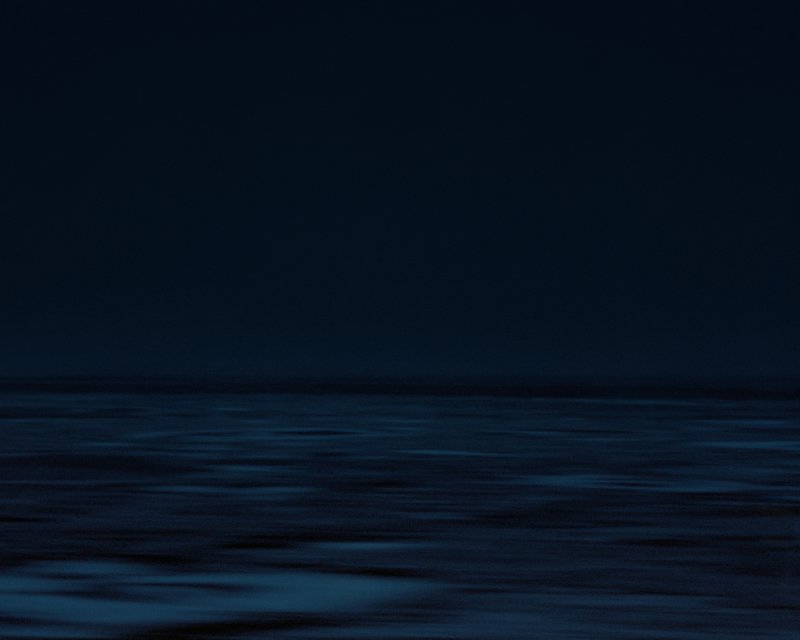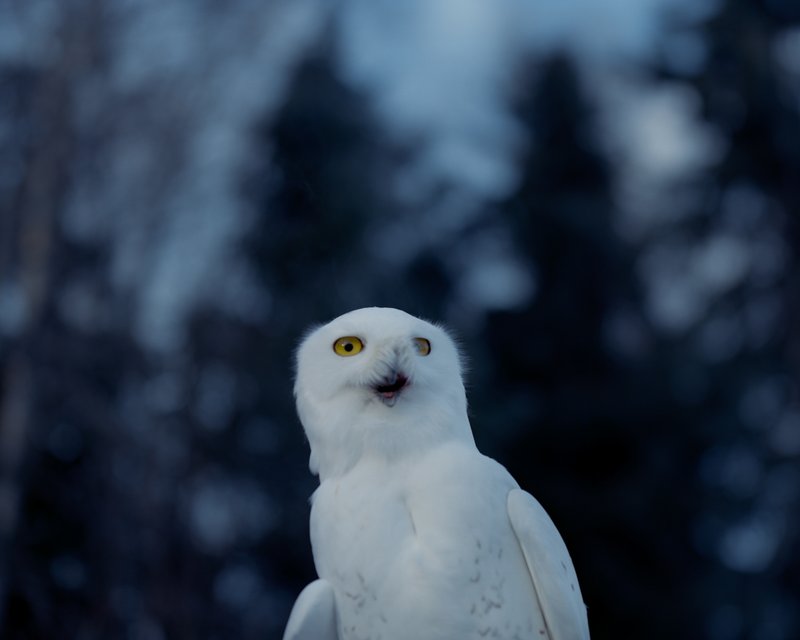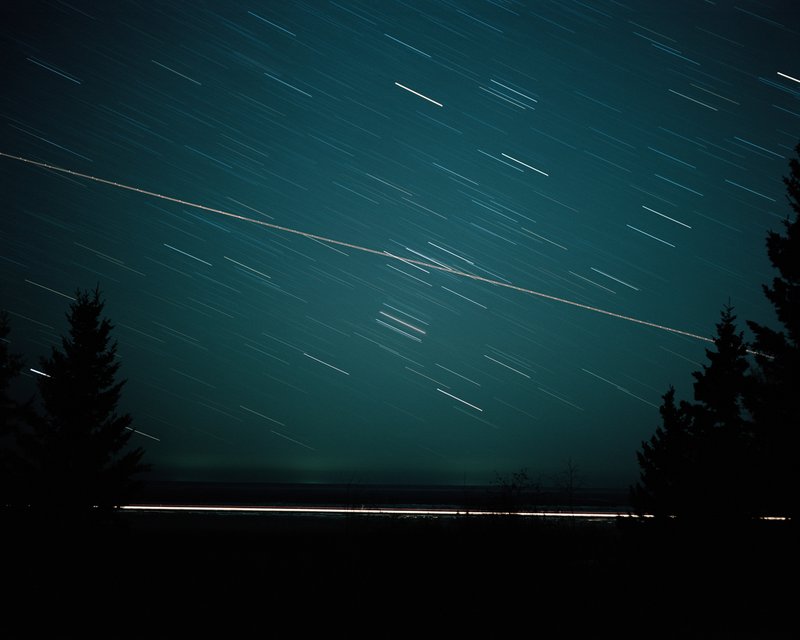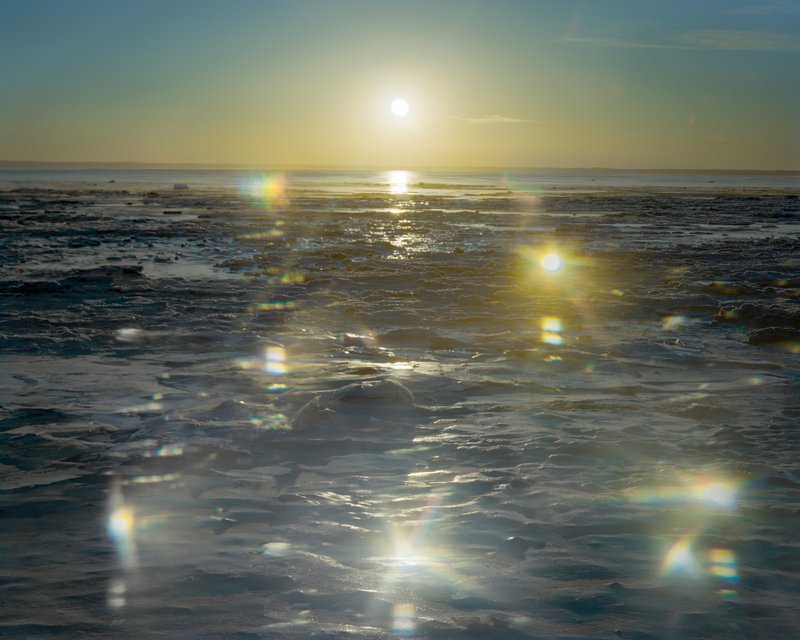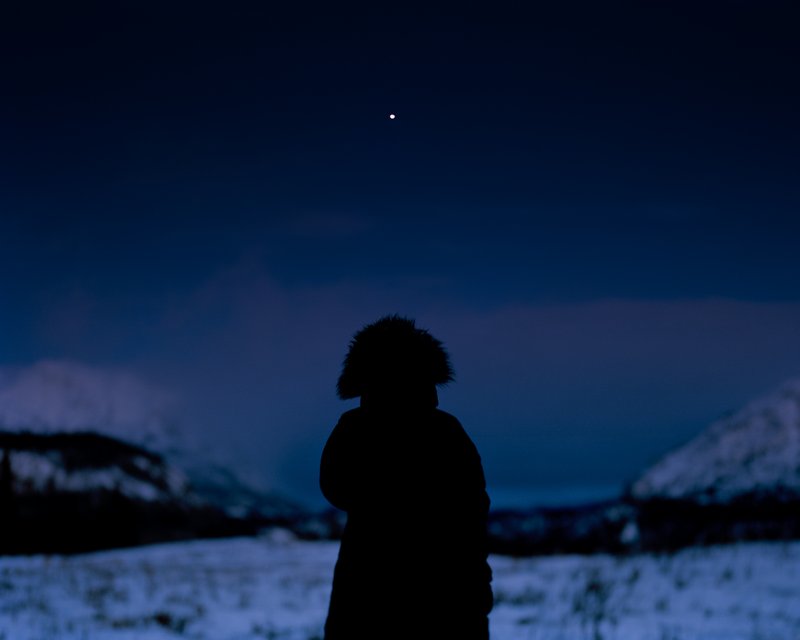Origins
These images are a meditation on the boreal landscape of Alaska, my childhood home. In a region not governed by conventions of light or time, hours pass in the movement of the stars, in the rush of the sea ice adrift in the tide. Together with my family, I seek the places and occurrences that convey the wondrousness I perceived as a child. The pictures construct a childhood mythology, where the landscape is a gateway to a numinous realm.
Aialik
The rain came in sheets and then in waves. It pounded our shelters and soaked into our skin. We awoke to water filling the forest floor. Our rivers grew wild and the tides turned turbulent; first, ice scattered the beaches, then dead trees, drifted in from distant bays. The glacier thundered all night. Our world filled with water, rising from below and pouring from above, and all around us shone in its reflection.
Photographed throughout a summer in Alaska’s Kenai Fjords, Aialik portrays a mysterious world of water and mist inhabited solely by women. These images draw viewers into a world of surreal wetlands, inviting them to shape their own narratives about these women, their lives, and their world.
Polaris
Polaris is an exploration of otherworldly occurrences in the wilderness of Alaska and Iceland— distant regions connected by climate, remoteness, and seismic activity. Polaris, the North Star, functions as a metaphor for the presence I feel emanating from these places, the only constant in environments that are otherwise in constant flux.
Under the Same Stars
Winter in the Arctic: vibrant, pulsing. The throb of club music pours from the community hall, streets alive with the roar of skidoos and the cries of dog teams. Faces illuminated by the glow of iPad screens in this polar night, the ding of text messages, the glow of the moon, the buzz of televisions and sewing machines and the silent stillness of hunters waiting, waiting. Feasts of walrus, seal and Coca-Cola; everyone talking about the land, returning to the land. Dancing, praying, hunting, sewing, playing games, telling stories, passing time. Waiting for spring, for the return of life - yet everything continues, even in darkness.
The north of Baffin Island, in the Canadian territory of Nunavut, has been home to the Inuit for over 5,000 years. Until the mid-1950s, people lived a semi-nomadic lifestyle subsisting off the land and sea. Communities today navigate shifts between the lifestyles and values of elders raised in a traditional hunting society, and the young generations growing up in the wake of colonization, with social media and access to the Internet. Photographed over four months in the community of Ikpiarjuk (Arctic Bay), Under the Same Stars celebrates the vibrancy of community life and the Arctic winter landscape during the darkest time of the year.
Women Working in Antarctica
Antarctica, a continent of ice surrounded by oceans, has never been permanently inhabited by humans. Since it was first sighted in 1820, followed by a flurry of early expeditions that were heavily publicized, the image of the Antarctic explorer has remained predominantly Western and male.
Today, 42 countries are part of the Antarctic Treaty, operating seasonal and year-round bases devoted to “science and peace” in addition to a booming tourist industry. Over half of all who work in Antarctic are women, including everything from explorers, expedition leaders, guides, scientists, and base commanders to support staff like heavy equipment operators, chefs, doctors and air traffic controllers.
Inspired by my own experiences as a female expedition guide in Antarctica, these images are part of a long-term, in-progress project documenting the women who work there—aiming to challenge stereotypes about who works in Antarctica and why.
Antarctic Snow Algae
Antarctica, 97% covered in ice, is often referred to as ‘the white continent’. But in the austral spring, snow algae is increasingly turning it pink, red, and green. The algae thrives in wet, slushy snow, especially near penguin colonies. Its colors, which act as a natural sunscreen, speed up melt by attracting more heat from the sun than snow and ice.
Snow algae is a regular, seasonal phenomenon during warm weather—but as the climate warms, its growth is accelerating. While not yet a significant contributor to climate change itself, the algae is a striking visual sign of larger-scale changes in the Antarctic climate.
Sea Ice Stories
Every spring, when the school year comes to an end, Inuit families in Arctic Bay, Nunavut take to the land to camp, hunt, fish, and pass on traditional knowledge to their children. In a time of rapid climatic and cultural change, subsistence hunting is an important way for Nunavut's growing population of young people to remain intimately connected with the land and their culture, learning skills and values that help prepare them to be leaders and providers in their communities.
For two months in 2018, I lived and traveled with families in Arctic Bay, photographing how the community comes together to teach young people the land skills and traditional knowledge that the colonial education system does not provide. These images are from an annual ice fishing competition, when community members camp together at frozen lakes; from camping trips with families to ancestral hunting grounds; and from a land camp organized by Arctic Bay’s Inuujaq School, where youth and elders connect to pass on traditional skills to all children, regardless of whether or not their families have the resources to go hunting themselves.
As sea ice declines globally, I wanted to make pictures that could show how sea ice, and the rich marine ecosystem it fosters, remains an important platform for travel, community life, and subsistence. I wanted to make pictures that could capture something about the sense of joyousness felt on the land; the quiet beauty of the Arctic landscape; the relationships between young people and the natural world.
Walrus Island
For millennia, thousands of male Pacific walrus have gathered on the shores of Round Island, Alaska every summer to rest and replenish themselves after mating season. This tiny, verdant island in Bristol Bay, one of seven that make up the Walrus Islands State Game Sanctuary, has also been an important walrus hunting ground for the Indigenous Yup’ik people for over 5,700 years. The island’s Yup’ik name is Qayassiq: "place to go in a kayak".
When the island was deemed a protected area in 1960, it was to protect what was then the last land-based haul-out for Pacific walruses in the United States after decades of commercial overhunting. Despite weighing in at over a ton, with three-foot-long tusks and skin up to four inches thick, walruses are incredibly sensitive to disturbance. Boat traffic, loud voices, or the sound of aircraft overhead can cause them to stampede into the water, sometimes leading to injury or death for animals caught in the frenzy. If a site is disturbed frequently enough, the walruses will abandon it completely. But thanks to the sanctuary’s protection, Round Island remains a seasonal home to thousands of Pacific walruses, as well as over 250,000 nesting seabirds.
Today, the sanctuary is co-managed by the Qayassiq Walrus Commission, representing nine Yupiaq communities who depend on walruses for subsistence. Since 1985, a state-run visitor program has allowed small groups of visitors to camp on the island every summer to view walruses in the wild. What’s more, data collected by the island’s field technicians about its seabirds and marine mammals—which function as climate indicator species—is some of the most consistent in the Bristol Bay region. As Arctic temperatures rise, what happens on this tiny, remote island can provide valuable insight into what’s going on in the broader marine ecosystem.
Salmon vs. Gold
For decades, the wilderness of Southwest Alaska has been the subject of a heated controversy over a proposed copper and gold mine headed by a Canadian company. The project, known as Pebble Mine, would be the largest open-pit mine in North America, generating an estimated $300 billion over a 20-year lifespan. The mine has long been met with fierce opposition for the irreversible harm it could pose to the pristine natural environment, and in particular, Alaska's lucrative salmon fishing industry. But it could also imperil the world's most celebrated populations of wild brown bears, which depend upon the region’s salmon-bearing rivers and draw tens of thousands of visitors to Alaska every year.
If built, Pebble Mine would use earthen dams to store hundreds of millions of tons of toxic mine tailings—including selenium, mercury, arsenic, and sulfuric acid—in the headwaters of the Bristol Bay watershed, the world's most productive wild salmon habitat. If the mine tailings were to leach into the water table, the rivers could be poisoned, destroying the homelands of over 25 Alaskan Native tribes and the jobs of 14,000 people who make a living from Bristol Bay's $1.5 billion salmon fishery. The construction of mining infrastructure would also result in permanent habitat loss for brown bears, a keystone species, and risk altering the unique human-bear relationships that make the Alaska Peninsula one of the world's best places to see bears in the wild.
For now, the fate of the region remains uncertain: while supporters of Pebble Mine wish to bolster the local economy, opponents of the mine feel that the consequences of an environmental disaster—to the salmon, the people of the region, and the bears—are simply too great to risk.
National Geographic, 2019



